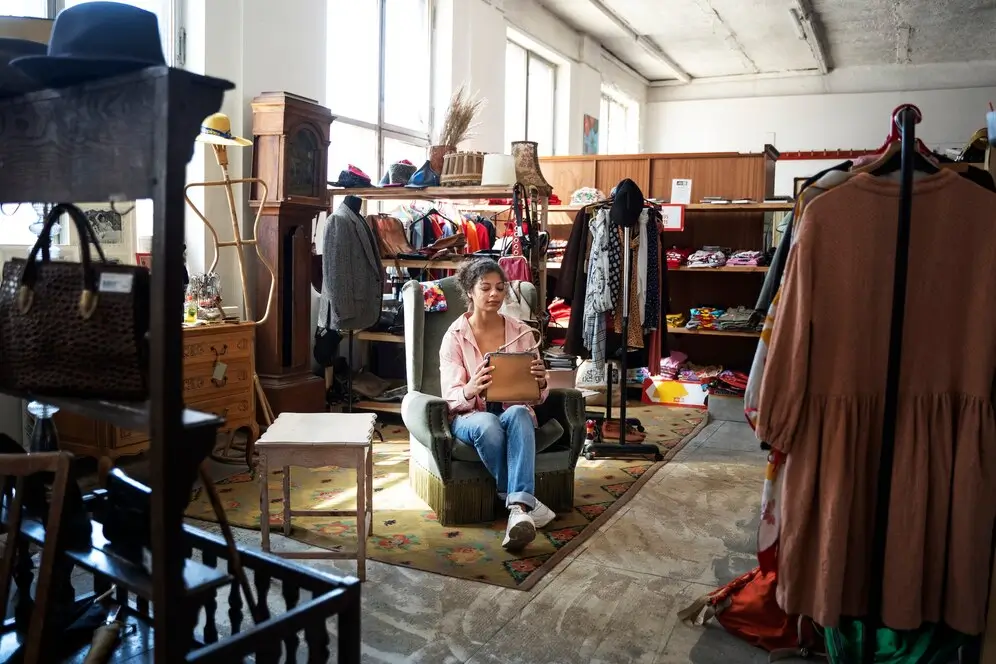The Timeless Allure Of Thrift Shopping: A Sustainable Fashion Revolution
Table of Contents
In a world dominated by fast fashion and rapidly changing trends, the art of thrift shopping has emerged as a counter-cultural movement, offering a sustainable and unique alternative to the mainstream fashion industry.
Thrift shopping, also known as second-hand shopping or vintage shopping, involves purchasing pre-owned clothing, accessories, and other items from thrift stores, consignment shops, and charity outlets.
This practice has gained significant popularity in recent years, as more and more people seek environmentally conscious and budget-friendly options for their wardrobe. This article explores the enduring charm of thrift shopping, examining its environmental impact, economic benefits, and the thrill of discovering one-of-a-kind treasures.
The Environmental Impact:
One of the primary reasons behind the growing popularity of thrift shopping is its positive environmental impact. The fashion industry is notorious for its high environmental toll, from the excessive water usage in cotton farming to the pollution caused by synthetic fabric production.
Additionally, the fast fashion model, characterized by quick turnover of styles and disposable clothing, contributes significantly to landfill waste. Thrift shopping provides a sustainable alternative by extending the lifecycle of clothing items and reducing the demand for new production.
By choosing second-hand clothing, consumers actively participate in the reduction of textile waste and contribute to a more sustainable fashion ecosystem.
Economic Benefits:
Thrift shopping not only benefits the environment but also offers economic advantages for both consumers and local communities.
Purchasing second-hand items is often more affordable than buying new, allowing individuals to stretch their budgets while still expressing their unique style.
Moreover, thrift stores are frequently run by charitable organizations, with the proceeds supporting various community initiatives, such as education, healthcare, and social services.
By choosing thrift shopping, consumers can make a positive impact on their local economy and contribute to the well-being of their communities.

Unique Finds and Personal Style:
One of the most enchanting aspects of thrift shopping is the thrill of discovering hidden gems and one-of-a-kind pieces.
Unlike mass-produced items found in mainstream stores, thrift shops are treasure troves of vintage and eclectic fashion. Shoppers can stumble upon unique garments that tell a story, reflecting different eras, styles, and cultural influences.
This element of individuality appeals to those seeking to express their personal style in a world saturated with homogenous, fast-paced fashion trends.
Thrift shopping encourages creativity and self-expression, allowing individuals to curate a wardrobe that stands out from the crowd.
The Rise of Conscious Consumerism:
As societal awareness of environmental issues grows, so does the trend of conscious consumerism. Thrift shopping aligns perfectly with this shift in mindset, as it encourages consumers to make thoughtful choices about their purchases.
By opting for second-hand items, individuals actively participate in reducing the demand for new production, lowering their carbon footprint, and fostering a more sustainable approach to fashion.
This shift towards conscious consumerism challenges the conventional narrative that buying new is always better and emphasizes the importance of mindful choices in building a more sustainable future.

Conclusion:
Thrifting has evolved from a niche hobby to a mainstream movement, offering a sustainable and socially responsible alternative to the traditional fashion industry. The allure of thrift shopping lies in its ability to blend environmental consciousness, economic benefits, and the thrill of unique finds.
As we navigate a world increasingly characterized by mass production and disposable fashion, thrifting stands out as a beacon of sustainability, encouraging individuals to make more mindful choices in their consumption habits.
The timeless appeal of thrifting lies not only in its economic advantages but in its ability to redefine personal style and contribute to a more environmentally friendly and socially responsible fashion landscape.
